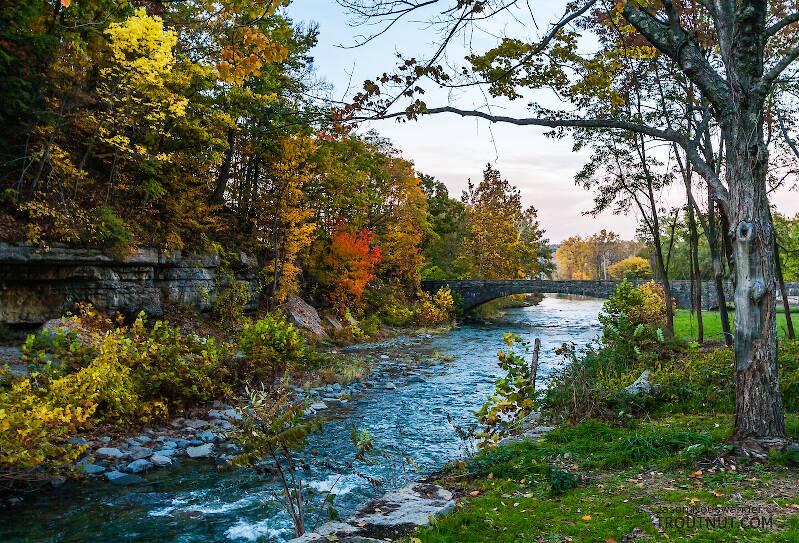
Hex Mayflies
Hexagenia limbata
The famous nocturnal Hex hatch of the Midwest (and a few other lucky locations) stirs to the surface mythically large brown trout that only touch streamers for the rest of the year.


Mayfly Species Isonychia diversa (Slate Drakes)
Species Range
Physical description
Most physical descriptions on Troutnut are direct or slightly edited quotes from the original scientific sources describing or updating the species, although there may be errors in copying them to this website. Such descriptions aren't always definitive, because species often turn out to be more variable than the original describers observed. In some cases, only a single specimen was described! However, they are useful starting points.
Male Spinner
Wing length: 9 mm
A small brownish species, with pale wings and unique genitalia.
Head and thorax dark reddish brown, brightest on the notum; pleura somewhat paler. Fore femur dark red, becoming blackish at the apex. Tibia blackish. Tarsus pale reddish brown, the basal half of the first and second joints yellowish. Fore tarsus as long as the tibia. Middle and hind legs whitish; femora slightly tinged with reddish, claws pale smoky. Wings hyaline, venation wholly pale.
Abdomen smoky brown with a reddish brown tinge. Tergites 9 and 10 are dark red-brown, sternites 8-10 bright reddish. Middle sternites paler than tergites, somewhat translucent. Posterior margins of all segments conspicuously dark. Pleural fold pale at margin; above this pale line is a dark strip at the center, and a dark mark in the stigma. Mid-dorsal line pale, widened posteriorly. Dark brown submedian streaks margin it, and are in turn margined by paler translucent strips, and these by a darker line. Submedian streaks obscure basally, distinct apically. Postero-lateral angles dark brown; antero-lateral angles paler, translucent. Sternites marked as are the tergites, with a wider median line. Tails white, unmarked.
Forceps base reddish; deeply excavated on apical margin. Forceps pale. Penes reminiscent of Siphloplecton in their form. Wide and united at the base, they taper suddenly, but again curve outward to form more or less rounded apical lobes, separated by a V-shaped notch. Each has a slight indentation on the apical margin (see fig. 126). Second joint of forceps at least a third longer than the terminal joints combined. Basal joint rather long and slender.
Start a Discussion of Isonychia diversa
References
- Needham, James G., Jay R. Traver, and Yin-Chi Hsu. 1935. The Biology of Mayflies. Comstock Publishing Company, Inc.
Mayfly Species Isonychia diversa (Slate Drakes)
Species Range
Common Names
Resources
- NatureServe
- Integrated Taxonomic Information System
- Global Biodiversity Information Facility
- Described by Traver (1934)

